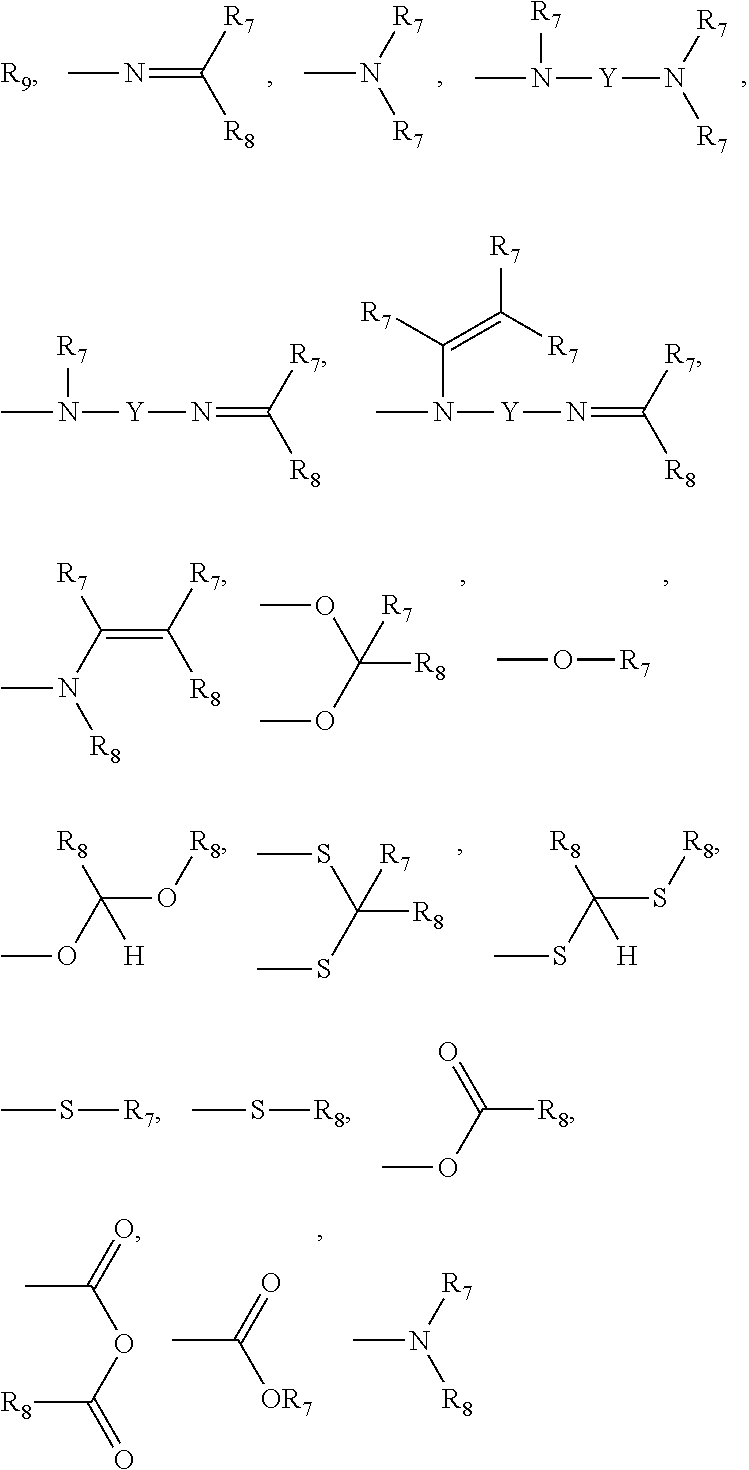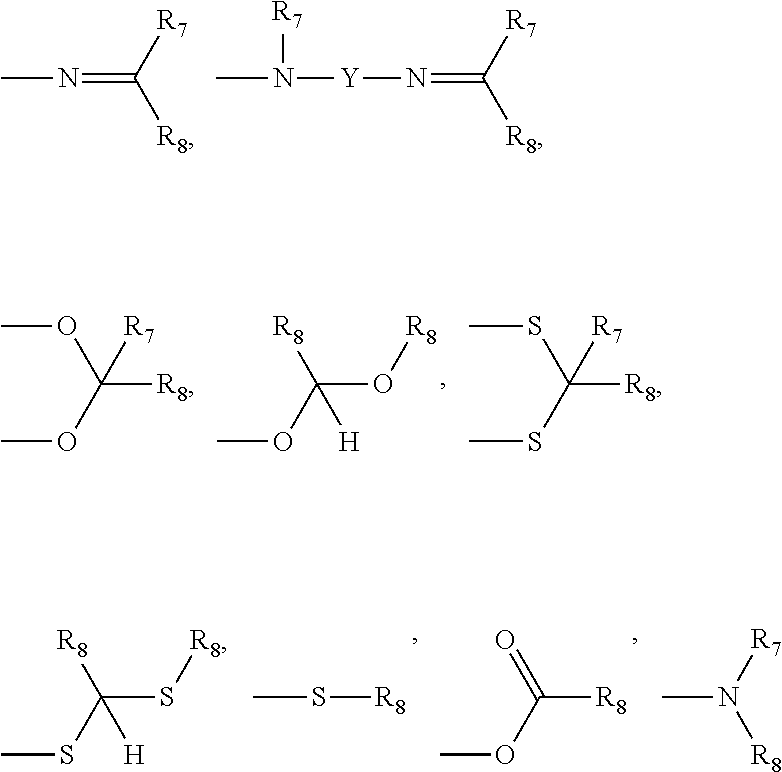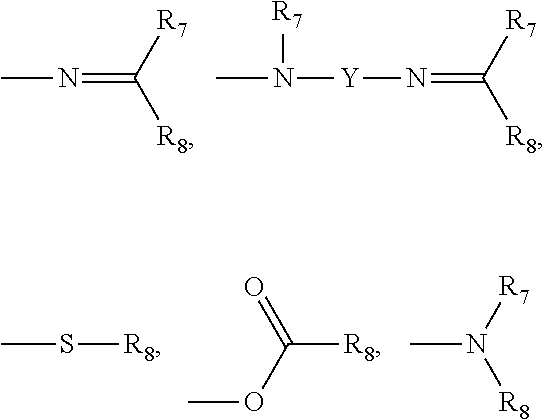Silicone compounds
- Summary
- Abstract
- Description
- Claims
- Application Information
AI Technical Summary
Benefits of technology
Problems solved by technology
Method used
Image
Examples
example 1
[0285]An amino methoxy functional polydimethylsiloxane, OFX-0536 Fluid (100 g; available from Xiameter from Dow Corning Corporation, Midland, Mich.), is combined with an alcohol, geraniol (40.58 g; available from Sigma-Aldrich, St. Louis, Mo.), and sodium methoxide (2.03 g at 25% in methanol; available from Sigma-Aldrich, St. Louis, Mo.). The mixture is heated at 125° C. for 16 hrs with argon sweep and stirring. The alkoxy compound is centrifuged, decanted as a clear liquid and analyzed via proton NMR. The X—Z moiety is
example 2
[0286]An amino methoxy functional polydimethylsiloxane, OFX-0536 Fluid (30 g; available from Xiameter from Dow Corning Corporation, Midland, Mich.), is combined with an alcohol, menthol (12.33 g; available from Symrise, Holzminden, Germany), and sodium methoxide (1.00 g at 25% in methanol; available from Sigma-Aldrich, St. Louis, Mo.). The mixture is heated at 125° C. for 72 hrs with argon sweep and stirring. The alkoxy compound is centrifuged, decanted as a clear liquid and analyzed via proton NMR. The X—Z moiety is
example 3
[0287]An amino methoxy functional polydimethylsiloxane, OFX-0536 Fluid (50 g; available from Xiameter from Dow Corning Corporation, Midland, Mich.), is combined with an alcohol, (E,Z)-2,6-nonadien-1-ol (18.45 g; available from Bedoukian Research, Inc, Danbury, Conn.), and sodium methoxide (1.00 g at 25% in methanol; available from Sigma-Aldrich, St. Louis, Mo.). The mixture is heated at 125° C. for 16 hrs with argon sweep and stirring. The alkoxy compound is centrifuged, decanted as a clear liquid and analyzed via proton NMR. The X—Z moiety is
PUM
| Property | Measurement | Unit |
|---|---|---|
| Fraction | aaaaa | aaaaa |
| Mass | aaaaa | aaaaa |
| Mass | aaaaa | aaaaa |
Abstract
Description
Claims
Application Information
 Login to View More
Login to View More - R&D
- Intellectual Property
- Life Sciences
- Materials
- Tech Scout
- Unparalleled Data Quality
- Higher Quality Content
- 60% Fewer Hallucinations
Browse by: Latest US Patents, China's latest patents, Technical Efficacy Thesaurus, Application Domain, Technology Topic, Popular Technical Reports.
© 2025 PatSnap. All rights reserved.Legal|Privacy policy|Modern Slavery Act Transparency Statement|Sitemap|About US| Contact US: help@patsnap.com



